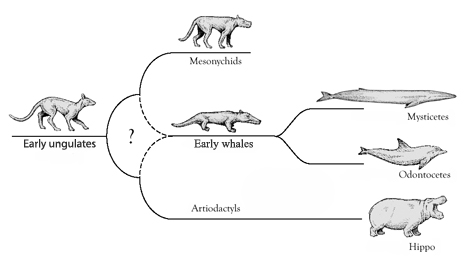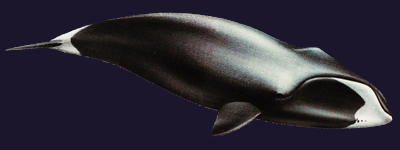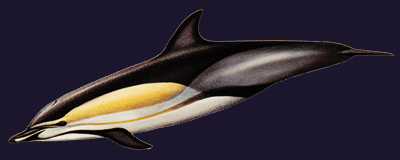|

The earliest whales lived in the geological period Eocene, about 55-34 million years ago. Some of these animals had still intact hind limbs and lived on land. When the animals adapted to a life in aquatic environments, the pelvic girdle and hind limbs were strongly modified. This development is well documented through fossil evidence, especially from India and Pakistan, Egypt and USA.
The earliest whales are called Archaeoceti, and consist of six different families. Pakicetidae lived about 50 million years ago and is the oldest and most primitive group. These were dog-sized animals which probably had an amphibious lifestyle. Although their general appearance is clearly different from the whales, the relationship can be ascertained by morphological details in the ear region which are found in all whales, but in no other mammals.
Ambulocetidae were larger than Pakicetidae, about the size of sea lions. The body was shaped much like a crocodile, but the hind limbs were longer. These animals lived about 49 million years ago.

The fossile predecessor of todays whales Ambulocetus natans
had a pelvis and hind legs and walked on land
Remingtonocetidae had even more reduced limbs, as well as longer snouts and small eyes. There was a large variation in body size in these animals, which lived about 49-43 million years ago.
Protocetidae lived about 46-36million years ago. These animals, which were of the same size as modern-day dolphins, had short limbs indicating that they were not well suited to move around on land. They probably lived most of their time in the water, but were still able to go ashore if necessary.
The families Basilosauridae and Dorudontidae had their greatest diversity around 35 million years ago. The animals were similar to modern whales, with a slender body, short neck and strongly reduced fore- and hind limbs. Some of these animals were up to 20 metres long.
|



